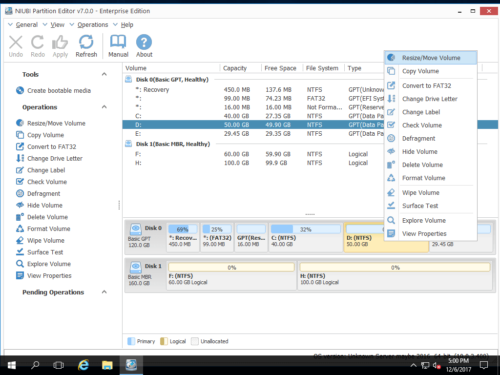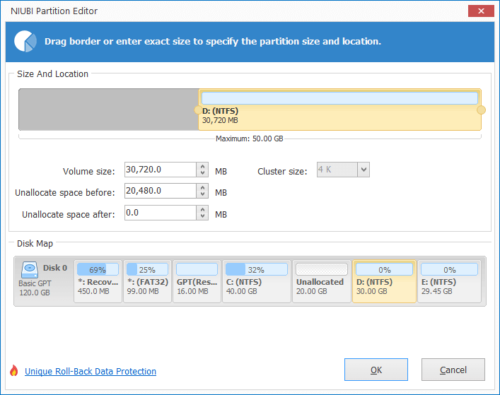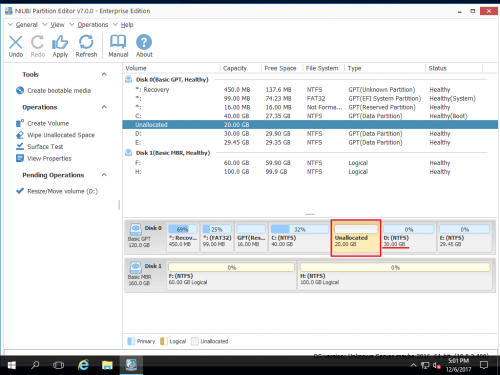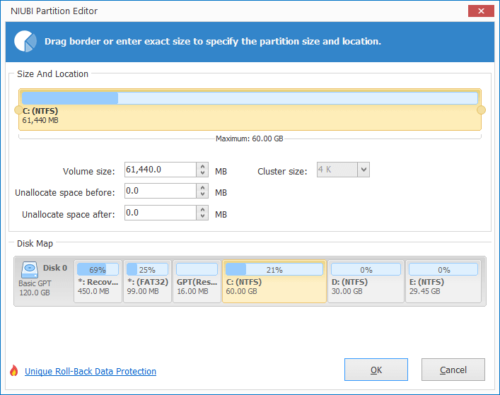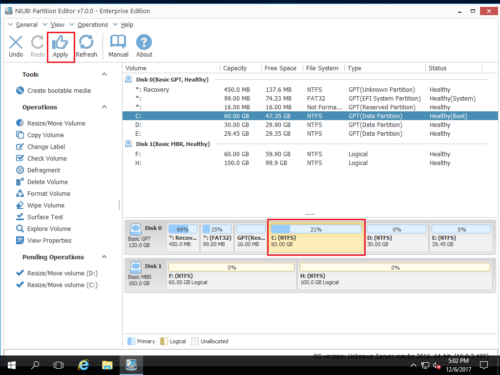How to increase partition size in Windows Server 2016
The typical disk space issue in a server is lacking of free space in C: drive. System C drive can be filling up by Windows updates, applications, temp files and many other kinds of files quickly. Free space in exchange/database or other partition can be eat up quickly, too. In this situation, you can increase partition size by moving free space from other drives. In this way, you can get out of this trouble fast and easily. Many people don’t know how to operate. In this article, I’ll introduce how to decrease and increase partition size in Windows Server 2016 without losing data.
To change partition size in Windows Server 2016, native Disk Management is an option. But because of many shortages, it is not perfect. Disk partition software is more powerful, but few can accomplish task well. You’d better back up server in advance and run safe partition software for Server 2016.
Increase partition size with Server 2016 Disk Management
The same with previous version, Windows Server 2016 has a native “Disk Management” tool. It has “Extend Volume” function to help increase volume size. However, it can only extend NTFS partition, any other types of partitions are not supported. In addition, to extend partition with this native tool, your disk partition layout must meet all requirements below:
- There’s a partition adjacent and on the right of the partition that you want to extend.
- These two partitions must be the same primary or logical.
- There are no programs installed in the adjacent partition and you must delete it before extending.
Although there’s another “Shrink Volume” to help decrease partition size, Disk Management cannot add unallocated space to other partitions. Learn why cannot extend volume in Server 2016 with Disk Management after shrinking other partition.
Increase drive size with safe partition software
Better than Disk Management, server partition software have more advantages when change partition size in Windows 2016 server:
- They can shrink and extend both NTFS and FAT32 partition.
- They can make unallocated space on either left or right when shrinking a partition.
- They can add unallocated space to either contiguous or nonadjacent partition on the same disk.
As I said in the beginning, you need a safe partition software to accomplish this task. Because there’s potential partition/system damage risk while adjust partition size. It is good habit to back up server before any operations, but it is not enough. If system or partition are damaged by unreliable software, it costs such a long time to restore from backup.
To solve this problem, NIUBI Partition Editor has unique 1-Second Rollback technology. If it detects any error while change partition size, it can revert server to original status in a flash automatically. It has Virtual Mode and Cancel-at-well technology to avoid wrong operations. Furthermore, it is able to clone disk partition in Windows without rebooting. You can system disk before any operations or regularly. Whenever system disk goes wrong, you can boot from the clone disk immediately. Because of its advanced file-moving algorithm, it is much faster to shrink, move and copy partitions. These abilities are very helpful to save time.
How to increase partition size in Windows Server 2016 without losing data:
Step 1: Download NIUBI Partition Editor, right click the adjacent volume D (or E in some server) and select “Resize/Move Volume”.
Step 2: In the pop-up window, drag left border rightwards to shrink this partition and release unallocated space on the left.

Click OK and back to the main window, unallocated space will be made next to C drive.
Step 3: Right click C drive and select “Resize/Move Volume” again, drag the right border towards right to combine this unallocated space.

Step 4: Click Apply on top left to execute, done. Note: all operations before this step only work in virtual mode.
If there is not plenty of free space in partition D, you can shrink nonadjacent partition on the same disk. In that case, there’s an additional step to move unallocated space. Follow the steps in the video to decrease and increase partition size in Windows Server 2016:
If you use any types of hardware RAID array or run Server 2016 in VMware/Hyper-V, follow the same steps above. Do not break RAID array or do any operations to RAID controller.

